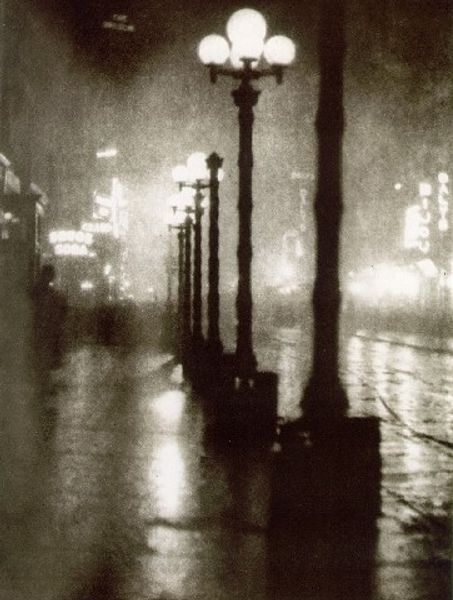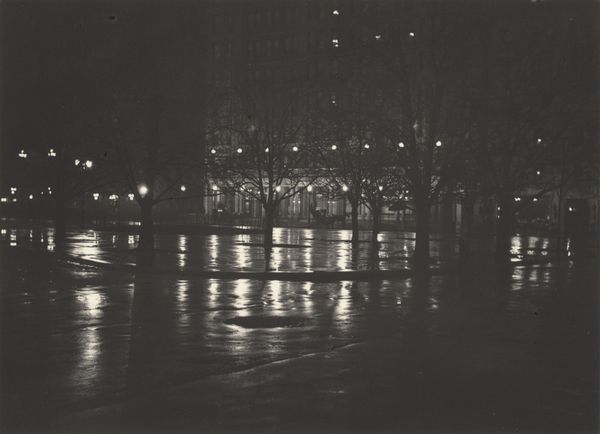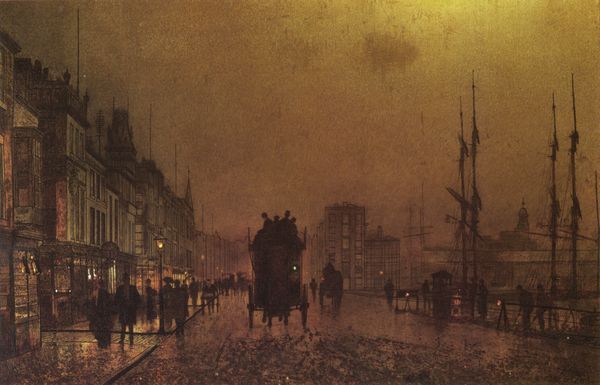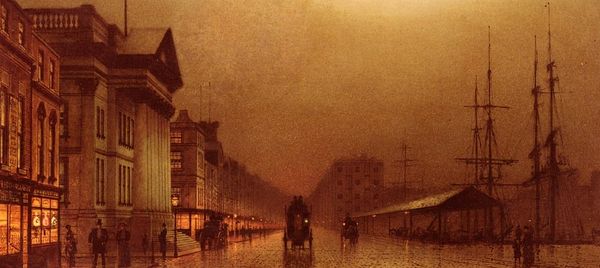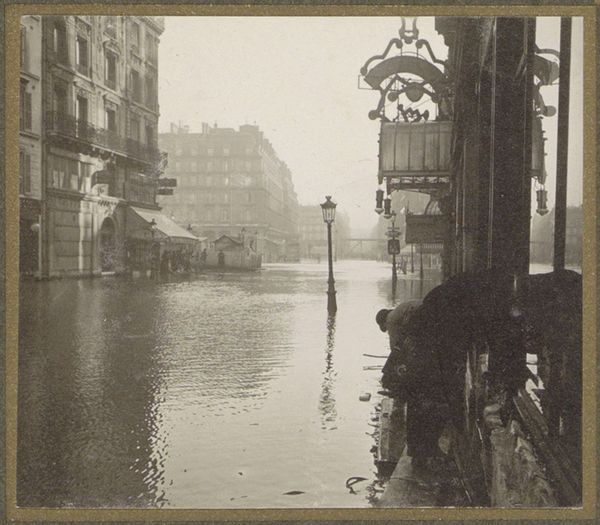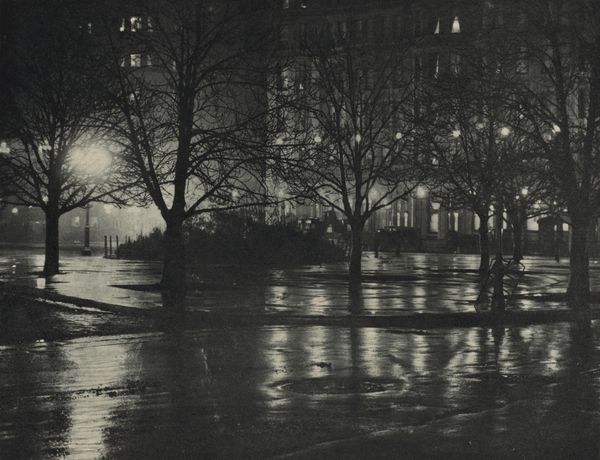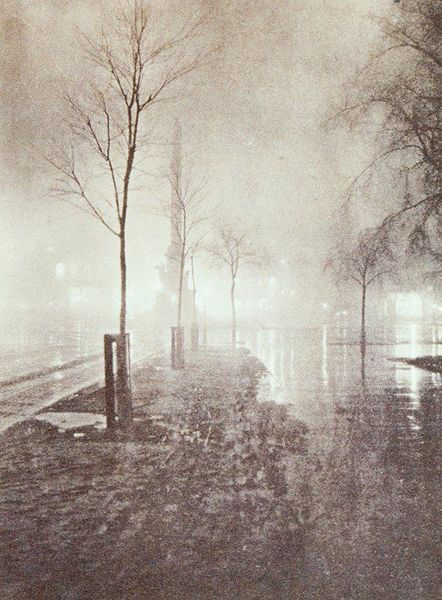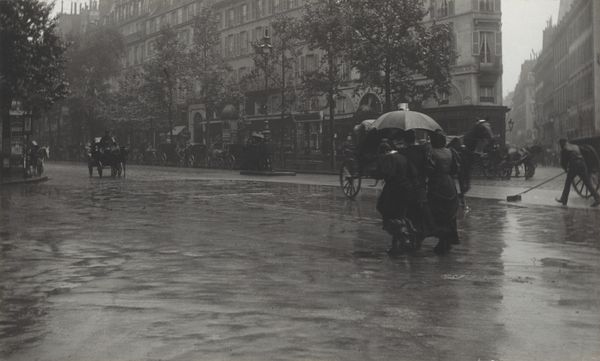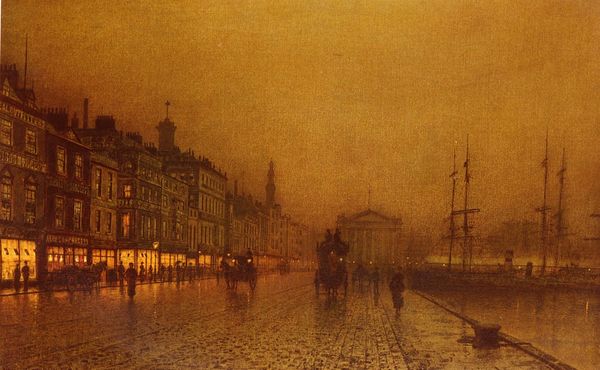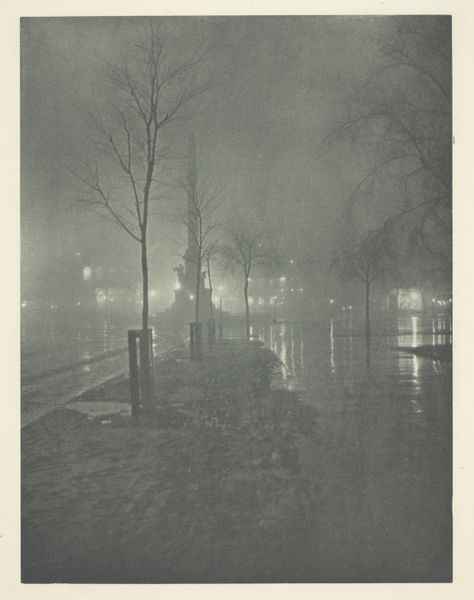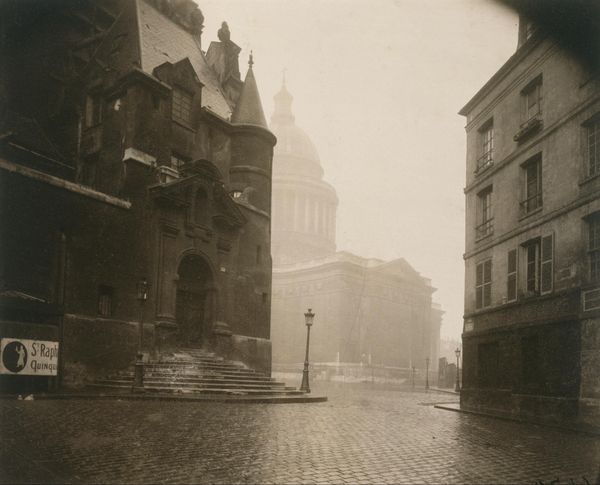
Dimensions: image: 12.1 x 23.5 cm (4 3/4 x 9 1/4 in.) sheet: 35.4 x 43.2 cm (13 15/16 x 17 in.)
Copyright: National Gallery of Art: CC0 1.0
Curator: Let's discuss Alfred Stieglitz's gelatin silver print, "The Glow of Night—New York," possibly from 1896 or 1897. It presents a rain-slicked city street at night, awash in artificial light. Editor: It's atmospheric. The darkness feels thick, almost like velvet, contrasted by those piercing points of light reflecting in the wet street. You can almost feel the damp chill. Curator: Indeed. Stieglitz, a key figure in the Photo-Secession movement, used photography to elevate it to the status of fine art. Works like this aimed to showcase photography's artistic potential beyond mere documentation. Street photography at the time was used to explore and document social changes and urbanization. Editor: The printing process here seems particularly crucial to understanding Stieglitz’s artistic intentions. It's not just about capturing the scene; it’s about manipulating the gelatin silver print to evoke a certain mood and texture. The tonality looks very expressive; the manipulation enhances that sense of mood. How much labor went into each individual print to obtain these effects? Curator: Stieglitz’s urban scenes, of which this is a prime example, coincided with debates about the role of photography in depicting modern life, challenging pictorial conventions in established art institutions, championing it instead as a distinct art form that could contribute meaningfully to public discourse. He wasn't just showing a street; he was showcasing the *idea* of the modern city and all that came with it. Editor: And considering the socio-economic stratification visible in those illuminated buildings juxtaposed against the gritty, rain-swept street... One ponders on issues of urban development and unequal distribution of light as both literal presence and metaphor for opportunity. The city both illuminates and casts shadows on its residents. Curator: Absolutely. It's not simply a landscape; it's a constructed image embedded within specific social and artistic debates. It's both visually striking and a potent social document of its time. Editor: Stieglitz successfully captured the ambiguous glow of a metropolis grappling with rapid transformation, reflecting it onto his chosen materials in a way that speaks to enduring tensions even now. Curator: Yes, looking at "The Glow of Night," we not only admire Stieglitz's photographic artistry but also his ability to capture and reflect the changing social landscape of New York at the turn of the century.
Comments
No comments
Be the first to comment and join the conversation on the ultimate creative platform.
